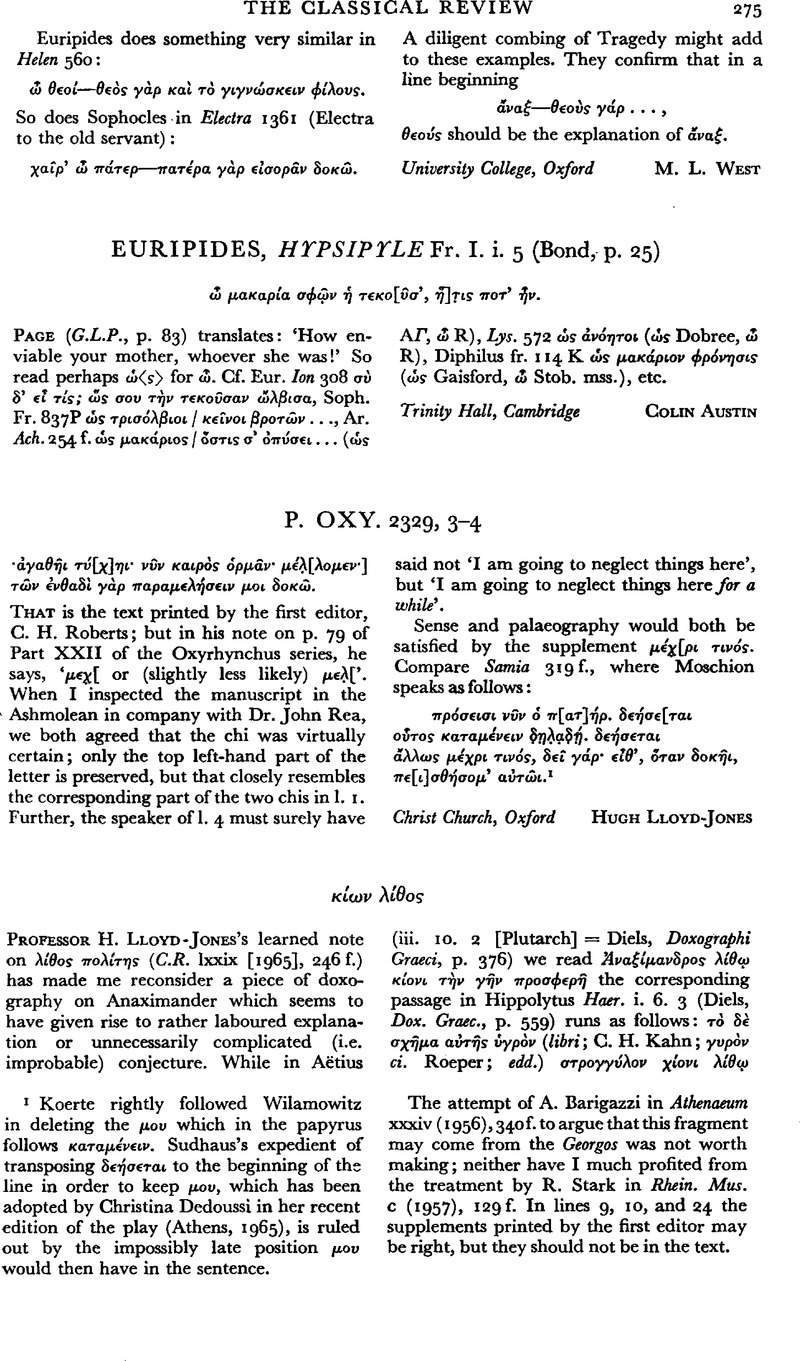No CrossRef data available.
Article contents
P. Oxy. 2329, 3—4
Published online by Cambridge University Press: 27 February 2009
Abstract

- Type
- Review Article
- Information
- Copyright
- Copyright © The Classical Association 1966
References
1 Koerte rightly followed Wilamowitz in deleting the μου which in the papyrus follows καταμ⋯νειν. Sudhaus's expedient of transposing δε⋯σεται to the beginning of the line in order to keep μου, which has been adopted by Christina Dedoussi in her recent edition of the play (Athens, 1965), is ruled out by the impossibly late position μου would then have in the sentence. The attempt of Barigazzi, A. in Athenaeum xxxiv (1956), 340fGoogle Scholar. to argue that this fragment may come from the Georgos was not worth making; neither have I much profited from the treatment by Stark, R. in Rhein. Mus. c (1957), 129fGoogle Scholar. In lines 9, 10, and 24 the supplements printed by the first editor may be right, but they should not be in the text.




